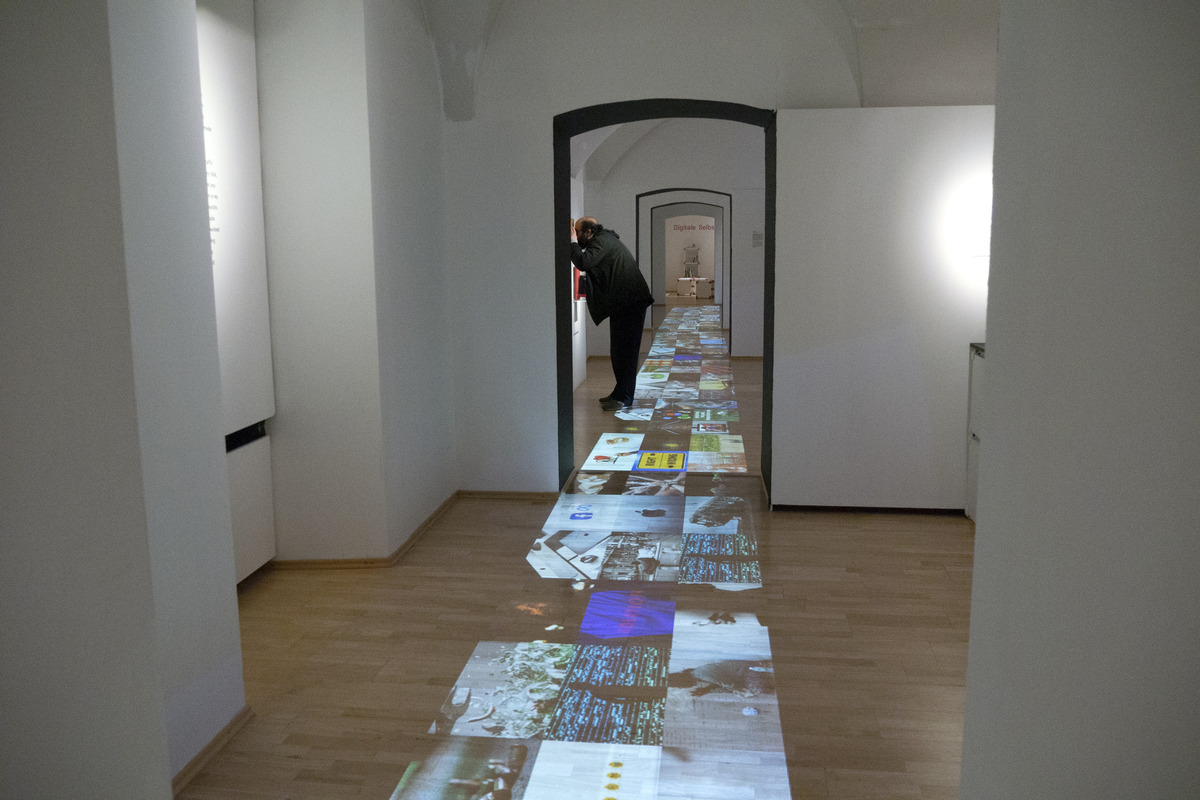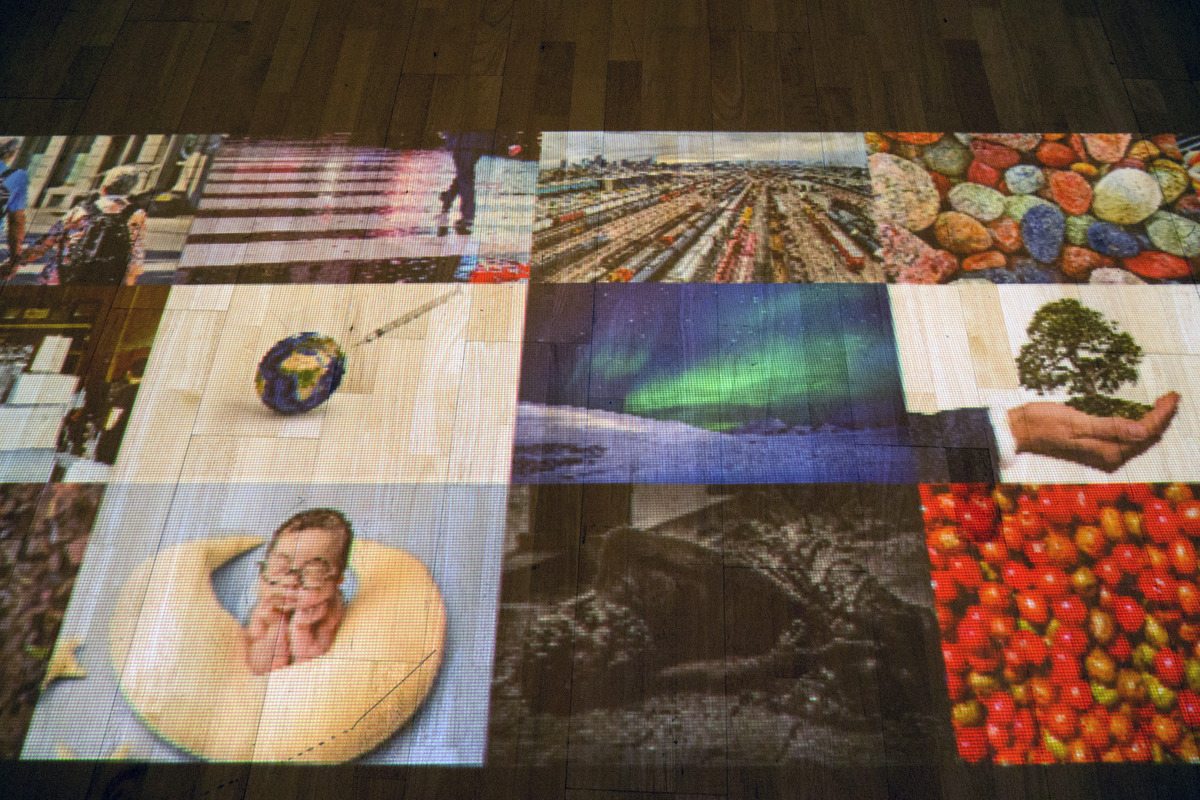
DigiDic - The Exhibition
Call to Digital Self-Defense
The world is hurtling at an incredible pace toward an absolute monopolization by the global digital players. A state unprecedented in the history of mankind. Companies worth billions in the digital economy are staking their claim for world dominion, which in China is already closely bound with a monolithic political power. The gold – data. The outcome – complete control, a need-generating apparatus calculated by algorithms and the total loss of privacy.
Trust is the staple of our diet; responsibility is something we as users can choose to assume or not; promises are meant to be kept, and anger and powerlessness are what we feel as a result of the constant abuse of our trust.
Taking these concepts as its point of departure and using art objects, interactive installations, objects from the collection of the Museum, as well as workshops, performances, artist talks, and lectures, the exhibition offers not only a glimpse beneath the surfaces but with the handbook being published in conjunction with the exhibition also a manual on digital self-defense.
In team sports, we regain autonomy in the use of our beloved tools!

What You Can Do: Digital Self-Defense
by Klaudia Zotzmann-Koch
In the face of the manifold problems brought on by the digital, it is only human to feel overwhelmed and powerless. It is, however, not necessary to single-handedly crush a multinational corporation in order personally to do something meaningful. Digital self-defense is for you because you know that each of us has something to hide and we all have the right to our privacy. And you are helping not only yourself here, but your family and your friends as well because digital self-defense is – also – a team sport.
more

Autonomy
by Margarethe Maierhofer-Lischka
The fact that a click in Facebook is not just you expressing a “like” but that at the same time it sets in motion a worldwide mechanism of algorithms and data streams, of hard- and software, that the ecological footprint of a search in Google is the equivalent of a cup of coffee, and that every activity and movement made by all of us in digital space is converted into data that can be commercially used, sold, and processed. These often invisible and not directly perceptible connections lead us to the fundamental question: Despite the omnipresent dogmas of individualism, how much autonomy and power to act does the digital age actually give us?
more
Our brainstorming produced this initial list of basic needs:
a) The need for communication
b) The need for information
c) The need for functionality and practicality of systems and tools
d) The need for self-determination and sovereignty in dealing with systems and tools
e) The need for trust in technologies
Complete autonomy in the sense of full individual freedom to make decisions and shape life on every level is not possible in digital space because networked structures are always linked to and dependent on other agencies (people, devices, algorithms, codes, programs). Autonomy in digital space, therefore, becomes a realm of possibilities and interdependencies for deciding and shaping, becomes a search for consensus – a notion in stark contrast with the absolute concept of the “autonomy of art” as it has been passed down to us through history.
Autonomy is not a state but a process of negotiation that needs contrary counterparts and confrontations: what are we trying to gain independence or autonomy from? What is the aim of this independence and which values does it stand for? Where do we draw the line between our own independence and that of the collective, which forms does collective autonomy take? The concept of (digital) autonomy each of us has depends on the background, context, and skills we as individuals bring to the table. The aim of our work group is to address this topic together and to explore the shared and individual needs and conceptions of the autonomy of our digital selves.
- Exhibition Objects | Press | Recommendations
Interdisciplinary exhibition on the topic of digital dictatorship, the question of autonomy and the development of strategies for digital self-defense
Preview Exhibition Folk Life Museum Graz
05 07 2024 - 03 11 2024
Exhibition Stadtmuseum St. Pölten
Prandtauerstraße 2
3100 Sankt Pölten
01 12 2022 - 19 03 2023
WED - SUN 10:00 - 17:00
Opening: 30 11 2022 18:00
Special opening hours
THU 12 01 / 26 01 / 09 02 / 23 02 and 09 03 2023 10:00 - 19:00
Manual - Call to Digital Self-Defense
by Klaudia Zotzmann-Koch and Marek Tuszynski _ Martina Eigelsreiter _ Lisa Kostrzewa _ Roland Alton-Scheidl _ Wolfgang Sander-Beuermann _ Daniel Lohninger _ Alexander Sommer _ Felix Wendt
–> download pdf
A cooperation with:
Tactical Tech
Büro für Diversität St. Pölten
NDU St. Pölten
FH St. Pölten
Stadtmuseum St. Pölten
Epicenter.works
fairkom
AK Niederösterreich
FH Joanneum


With
project management:
Elisabeth Schimana
/
advisory board:
Seppo Gründler
_
Eva Ursprung
_
Tassilo Pellegrini
_
Martina Eigelsreiter
/
exhibition design:
Christian Herzog
_
Serdar Songür
/
audio design:
Elisabeth Schimana
_
Seppo Gründler
/
graphic design:
Nora Bischof
_
Andreas Rathmanner
/
video and programming:
Peter Venus
_
Norbert Math
/
educational program:
Klaudia Zotzmann-Koch
_
Martina Luef
/
translation:
Kimi Lum
_
Jacqueline Csuss
/
organisation:
Anita Hofmann
_
/
PR:
Barbara Vanura









































